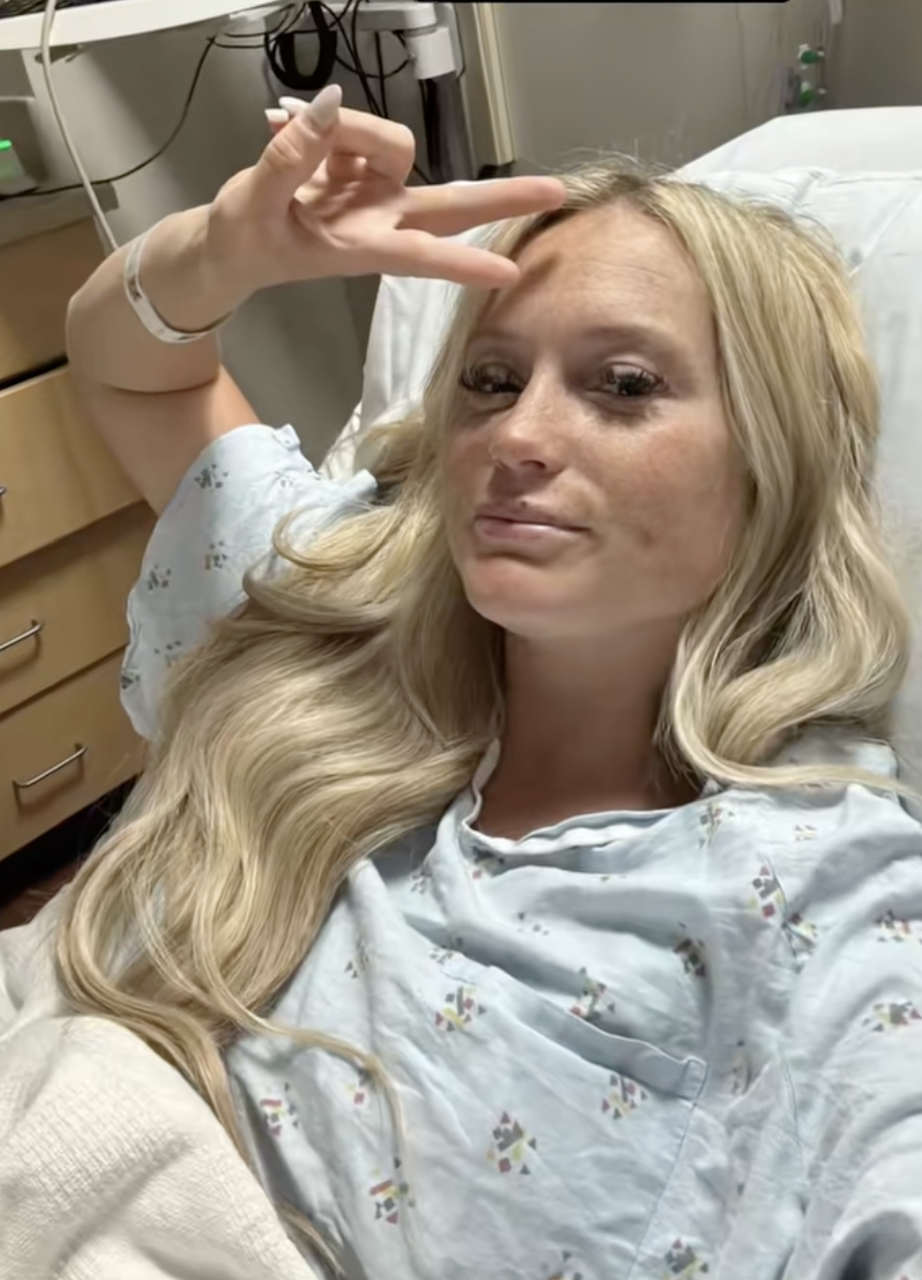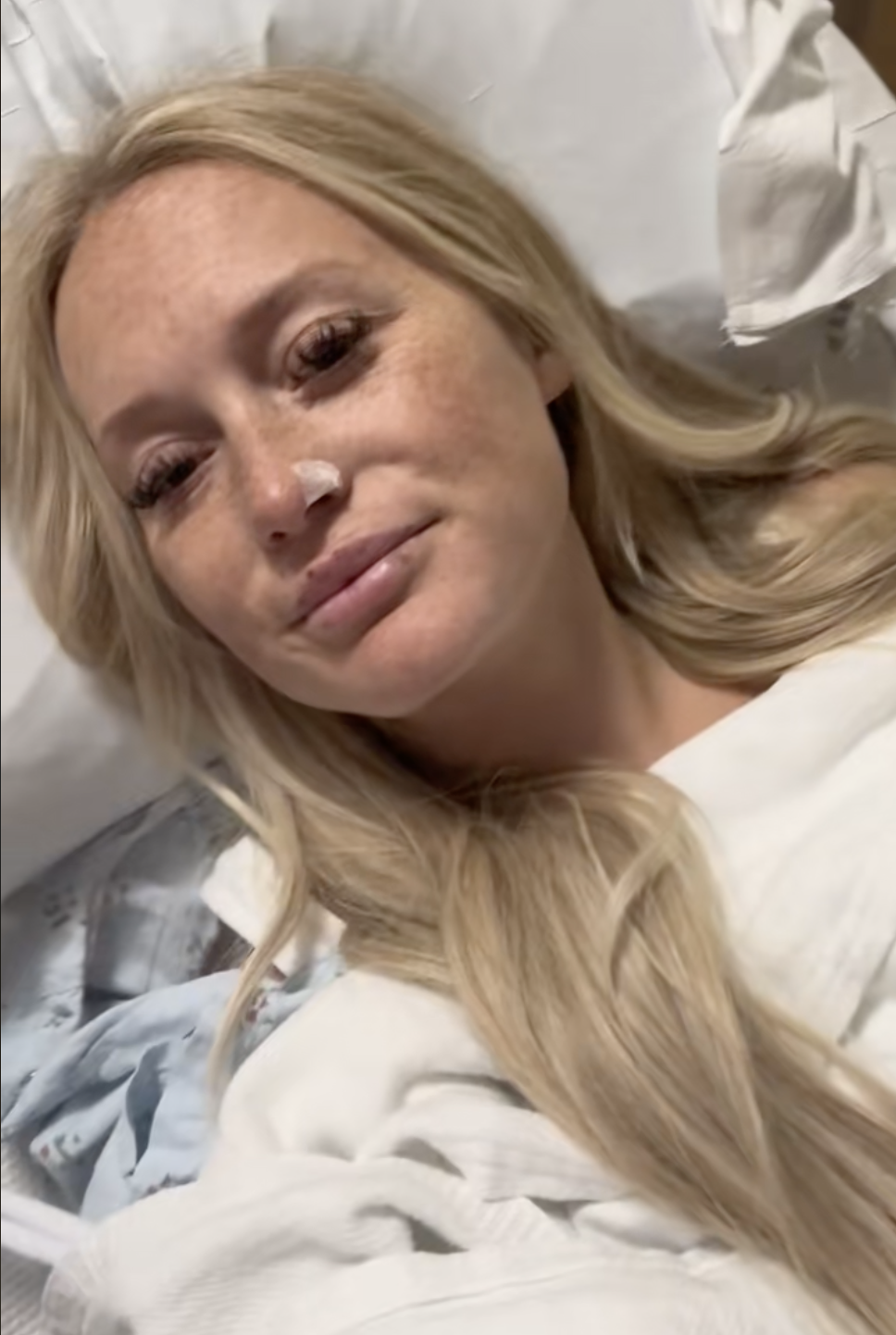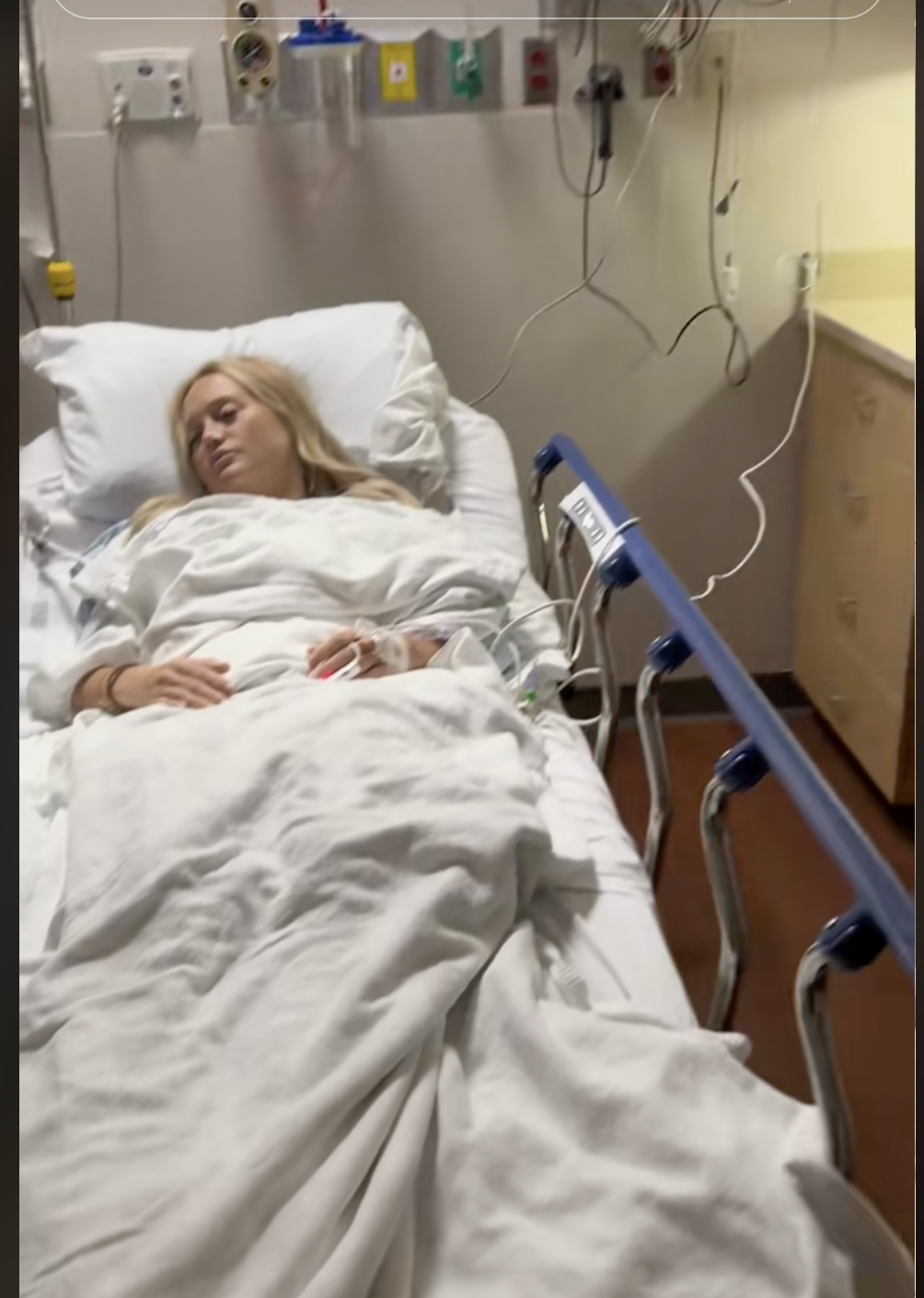
Mom of 3 Left Paralyzed After Common Cosmetic Procedure — What Went Wrong?
She was in her early 30s and considered cosmetic treatments a normal part of her self-care routine. When she suddenly became ill after one of those appointments, she never imagined the beauty enhancements were to blame. Years later, she would uncover the cause, something even her doctors had brushed off.
A Georgia mother of three went from managing daily family life to suddenly losing the ability to walk and care for herself. The unexpected medical crisis left her housebound and dependent on her husband as doctors struggled to explain what was happening.
Over the next two years, she underwent repeated tests, hospital visits, and consultations with specialists, all while her symptoms persisted. The search for answers eventually revealed an uncommon cause, raising questions about a procedure many people consider routine.
The Start of an Unexpected Medical Mystery
Cosmetic enhancements weren't a new thing for Amanda Wolaver of Goodhope, Georgia. Married to Josh and mom to three children — Landen, Braxton, and Havyn — Wolaver regularly made time for her self-care while balancing family life and her job as a sales director.
On August 24, 2023, she drove to a well-known surgery center in Atlanta for what she expected to be another routine visit. She hadn't seen the nurse administering her injections in years, but she trusted the clinic's reputation and didn't think twice.
That day, she received 104 units in total, targeting her forehead, crow's feet, and the lines between her eyebrows, commonly known as "11s." In the evening, after her appointment, she developed a sudden and severe headache and went to bed early, thinking it would pass. By the next morning, she could barely walk or speak.
Confused and frightened, she went to the emergency room at a local hospital, where doctors ran a CT scan. The results showed nothing abnormal, and she was sent home with a migraine diagnosis. In the days that followed, her symptoms didn't improve.
Waves of dizziness and weakness left her struggling to move through the house. Loud noises and strong smells made her feel even more disoriented. She could no longer cook, drive, or manage her usual routines, and her husband took over caring for the children and keeping the household running.
After multiple follow-ups, Wolaver returned to her primary care doctor, who immediately noticed how unwell she was. The doctor sent her back to the hospital for further evaluation, but a second CT scan again showed nothing abnormal. Although they insisted that her symptoms were consistent with a migraine, she knew something was seriously wrong.
The Testing Marathon
With no signs of improvement, Wolaver's primary care physician then referred her to a neurologist, marking the beginning of a long and frustrating diagnostic process. The specialist ordered a series of MRIs on her brain and neck, both with and without contrast, to look for signs of stroke or other neurological damage.

Amanda Wolaver lies in a hospital bed, as seen in a post dated May 18, 2025 | Source: TikTok/amandawolaver
When the first MRI results came back, doctors found evidence of multiple transient ischemic attacks (TIAs), also known as mini-strokes. These strokes were recent, but no one could explain what caused them. Her neurologist asked if she had been in a car accident, suffered a head injury, or experienced any major trauma.
Wolaver had done nothing unusual, except for the routine appointment that preceded the illness. Despite the finding of TIAs, her doctors wanted more answers. She underwent spinal tap procedures to rule out infections and neurological conditions like multiple sclerosis. When those results came back clear, the focus shifted to her heart.

Amanda Wolaver in a hospital bed, as seen in a post dated May 18, 2025 | Source: TikTok/amandawolaver
Doctors first placed an external heart monitor, which she wore for 30 days, to check for irregular rhythms that might have caused the strokes. When the readings were inconclusive, she had surgery to implant a heart monitor inside her chest, which she wore for six to eight weeks. Even that showed only minor irregularities, nothing that could fully explain her condition.

Amanda Wolaver lies in a hospital bed, as seen in a post dated May 18, 2025 | Source: TikTok/amandawolaver
During this period, Wolaver felt like a medical experiment, cycling between hospital visits, procedures, and specialist appointments without answers. She experienced constant brain fog, dizziness, and fatigue. Looking back, she described the period as a blur, saying she could hardly remember how she got through those first months.
Despite the extensive testing, no clear cause emerged, and her symptoms persisted. "All while they're trying to figure out what's wrong with me, I'm slowly dying," she later recounted.
Connecting the Dots Herself
After months of tests and invasive procedures, Wolaver still had no clear answers. Although she was convinced that her symptoms were linked to the injections, her doctor initially dismissed that possibility. Frustrated and desperate to understand what was happening to her body, she decided to investigate on her own.
She began searching the internet and joining Facebook support groups, where she discovered hundreds of other men and women sharing stories of sudden illness after cosmetic injections, including Botox, Dysport, and facial fillers.
Members of the community described symptoms like dizziness, weakness, brain fog, and facial paralysis, many of which mirrored her own experience. Two women she met online became her closest confidants during this period, offering emotional support as she pushed for a diagnosis.
Convinced she had found the missing piece, Wolaver returned to her doctors to request further testing. She also pursued private medical testing in March 2025, spending over £22,000 (around $29,000) to get the answers that had eluded her for nearly two years. The results confirmed her suspicion.
The TIAs she had suffered had left visible marks on her brain scans. She was experiencing iatrogenic botulism, a rare and serious complication of cosmetic injections. "That knocked me back," she said. "To be told I had suffered from multiple small strokes in my brain made me think that this would eventually kill me."
Understanding Wolaver's Illness
Wolaver's diagnosis revealed that she was suffering from iatrogenic botulism. This rare complication occurs when botulinum toxins used in medical or cosmetic procedures travel beyond the injection site and affect the body's nervous system.
Iatrogenic botulism can cause headache, facial paralysis, and muscle weakness, and in rare cases, more serious neurological symptoms. The condition arises from the same toxin that causes botulism, a rare but serious illness where toxins attack the body's nerves and can lead to life-threatening complications.
Botulism is caused by the bacterium Clostridium botulinum, which produces a powerful neurotoxin. Most cases are associated with foodborne or wound contamination, or, rarely, with infant intestinal infections. Botulism can also result from medical treatment or bioterrorism, though such occurrences are uncommon.
Botox and Dysport injections are made from a purified form of the same toxin, which is approved by the U.S. Food and Drug Administration for both cosmetic and medical use. These injections temporarily prevent targeted muscles from moving and are commonly used to smooth facial wrinkles.
In medical contexts, they are also prescribed to treat neck spasms, excessive sweating, an overactive bladder, lazy eye, and even to help prevent migraine headaches. Under licensed medical supervision, these procedures are generally considered safe because the purified bacterial toxin meets strict medical control standards.
However, iatrogenic botulism remains a known, if extremely rare, risk. In Wolaver's case, the toxin affected her nervous system, producing symptoms like:
- Dizziness and vertigo
- Brain fog and confusion
- Muscle weakness and difficulty walking
- Ringing in the ears
- Mini-strokes (TIAs)
Her doctors explained that there is no direct treatment for iatrogenic botulism; recovery depends on allowing the body to detoxify naturally over time, a process that can take years. For Wolaver, the diagnosis finally explained the months of frightening, unexplained symptoms that had disrupted her life.
Adjusting to a New Life
Even after receiving a diagnosis, Wolaver's recovery has been slow. Nearly two years later, she has not fully regained her strength, and the lingering effects of iatrogenic botulism continue to affect her daily life.
Her first step toward recovery was to change her daily habits to support her body's healing. She focused on detoxifying her body and managing symptoms, which meant changing her diet completely, cutting out caffeine and soda, and removing anything that could place additional stress on her system.
She also chose to have her breast implants removed, believing this step could help her body heal more effectively. The lifestyle changes have helped her gradually improve, but she still must carefully pace her activities. Waves of dizziness and fatigue can appear without warning, and her body continues to recover slowly from the strokes.
Looking back, she admitted that the experience changed how she views self-care and aging. "I learned the cost of beauty the hard way," Wolaver said, adding that she has since embraced her natural wrinkles.
Speaking Out and Moving Forward
After two years of illness, testing, and slow recovery, Wolaver decided to share her experience publicly. She turned to TikTok, posting videos that documented her journey from the day her symptoms began to her eventual diagnosis.
Wolaver's goal in speaking out is to raise awareness about the potential risks of cosmetic procedures and to help others recognize symptoms early. She also uses her platform to encourage routine medical checkups, a message she reinforced after facing a separate health scare.
During her recovery, she was diagnosed with grade 2 precervical cancer, which was treated successfully through a cervical procedure that removed all abnormal cells. In a TikTok update, she expressed gratitude for early detection and the care she received. "Ladies, please don't skip your checkups. Your health matters," she advised.
Today, Wolaver continues to focus on healing while sharing her story to prevent others from facing the same ordeal. Her experience serves as a reminder that even familiar procedures can carry unexpected risks, and that listening to your body and advocating for your health can make all the difference.
Wolaver's journey mirrors that of Suki Tipp, who spent years battling unexplained pain, rashes, and dizzy spells that doctors couldn't explain. Her life changed the day a wasp sting sent her into anaphylactic shock, finally revealing a rare blood disorder that turned her once-active life as a mother of four into near-total isolation.
The information in this article is not intended or implied to be a substitute for professional medical advice, diagnosis or treatment. All content, including text, and images contained on news.AmoMama.com, or available through news.AmoMama.com is for general information purposes only. news.AmoMama.com does not take responsibility for any action taken as a result of reading this article. Before undertaking any course of treatment please consult with your healthcare provider.
